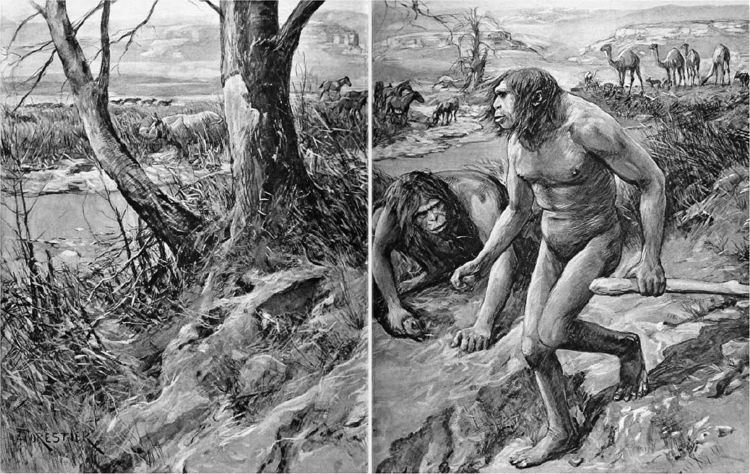 | ||
Nebraska Man was a name applied to Hesperopithecus haroldcookii, a putative species of ape. Hesperopithecus meant "ape of the western world," and it was heralded as the first higher primate of North America. Haroldcookii was given as the species name in reference to the original discoverer of the tooth, Harold Cook. It was originally described by Henry Fairfield Osborn in 1922, on the basis of a tooth that rancher and geologist Harold Cook found in Nebraska in 1917. The discovery was made around ten years after the finding of Piltdown Man, another possible human ancestor that turned out to be a hoax. Although Nebraska man was not a deliberate hoax, the original classification proved to be a mistake.
Contents
Discovery and examination
In February 1922, Harold Cook wrote to Dr. Henry Osborn to inform him of the tooth that he had had in his possession for some time. The tooth had been found years prior in the Upper Snake Creek beds of Nebraska along with other fossils typical of North America. Dr. Osborn received the specimen in March 1922, and quickly set out to identify it. Osborn, along with Dr. William D. Matthew soon came to the conclusion that the tooth had belonged to an anthropoid ape. They then passed the tooth along to William K. Gregory and Dr. Milo Hellman who agreed that the tooth belonged to an anthropoid ape more closely related to humans than to other apes. Only a few months later, an article was published in Science announcing the discovery of a manlike ape in North America. An illustration of H. haroldcookii was done by artist Amédée Forestier, who modeled the drawing on the proportions of "Pithecanthropus" (now Homo erectus), the "Java ape-man," for the Illustrated London News. Osborn was not impressed with the illustration, calling it: "a figment of the imagination of no scientific value, and undoubtedly inaccurate".
Retraction
From its initial description, Hesperopithecus was regarded as an inconclusive find by a large portion of the scientific community. Examinations of the specimen continued, and the original describers continued to draw comparisons between Hesperopithecus and apes. Further field work on the site in the summers of 1925 and 1926 uncovered other parts of the skeleton. These discoveries revealed that the tooth was incorrectly identified. According to these discovered pieces, the tooth belonged neither to a man nor an ape, but to a fossil of an extinct species of peccary called Prosthennops serus. The misidentification was attributed to the fact that the original specimen was severely weathered. The earlier identification as an ape was retracted in the journal Science in 1927.
Creation vs. evolutionism
Although the identity of H. haroldcookii did not achieve general acceptance in the scientific community, and the purported species was retracted half a decade after the original article had been published by Osborn, creationists have promoted the episode as an example of the scientific errors that can undermine the credibility of paleontology and hominid evolution theories, and how such information is peer reviewed or accepted as mainstream knowledge.
Scopes trial
During the same time period as the discovery and examination of the tooth, the teaching of evolution in public schools was under fire in the Scopes trial. The prosecution was led by William Jennings Bryan. Leading up to the trial, Osborn and Bryan were engaged in a back-and-forth debate on the validity of the other's beliefs. However, at the trial, Osborn remained quiet on the subject of Nebraska man. The evidence was starting to build up against Hesperopithecus, and Osborn didn't want to put the defense at risk of losing.
